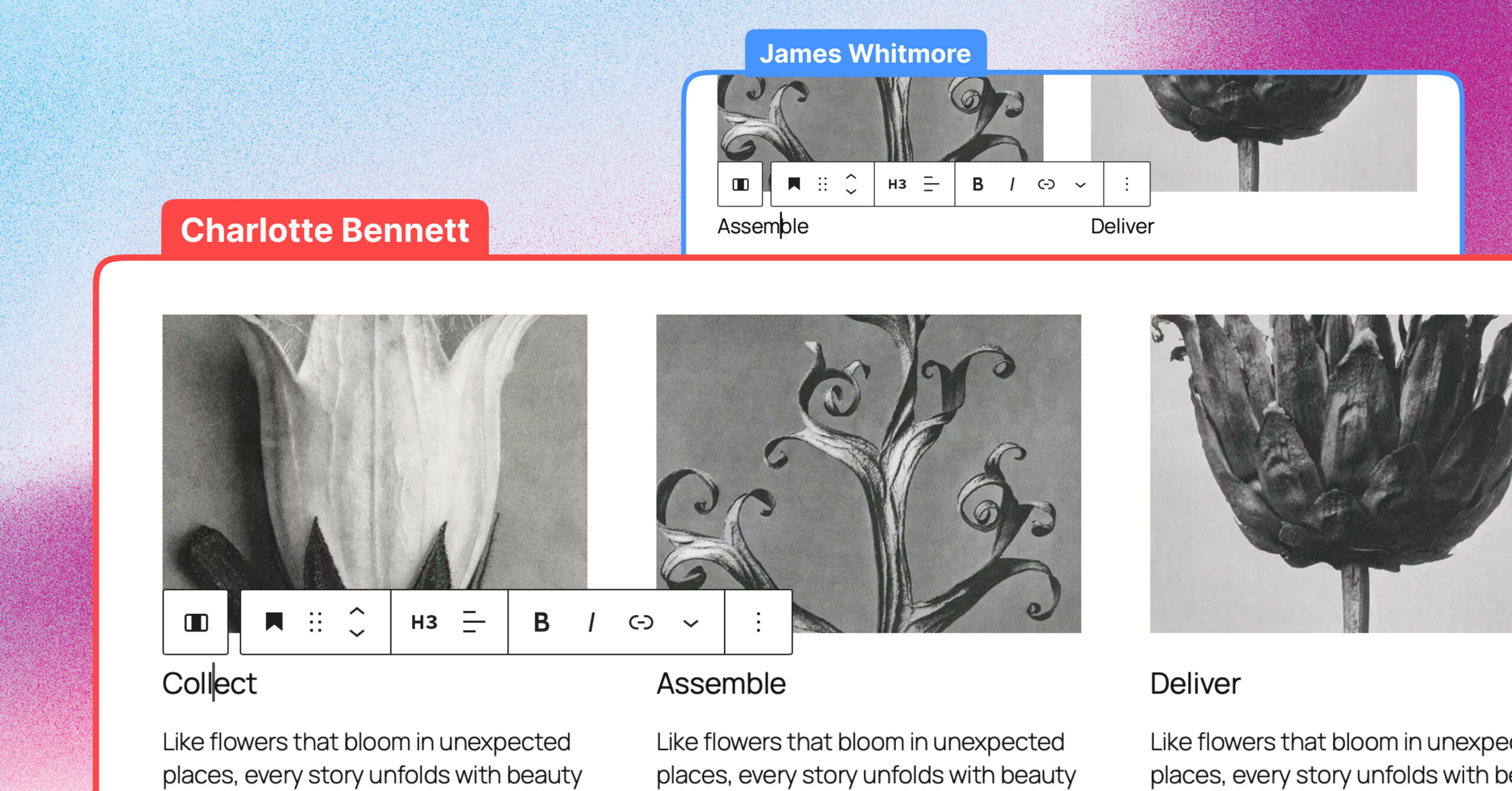WordPress is stepping up its game in collaborative editing with exciting updates in Phase 3 of the Gutenberg project. These changes aim to make WordPress a better tool for publishing teams working together, whether in real-time or asynchronously. Let’s dive into what’s new, and see how WordPress stacks up against other CMS platforms already offering similar tools.
Real-Time Collaboration: A Big Leap Forward
One of the standout features coming to WordPress is real-time collaboration. Think of it like Google Docs but in your WordPress editor. Multiple people will be able to edit the same post or page simultaneously. Key features include:
- Live Edits: See changes happening in real time as your teammates make updates.
- User Presence Indicators: Instantly know who else is working on the same piece of content with visual cues.
This is a huge deal for teams who’ve struggled with the old WordPress “lockout” system, where only one user could edit at a time. While it’s still catching up to other tools, this update shows WordPress is listening to users who need better collaboration.
Inline Commenting: Finally Here!
Inline commenting is one of the most useful new features, making it much easier to provide and act on feedback. It allows users to leave comments directly on specific parts of a post or page, ensuring clarity about what needs changing, and once addressed, comments can be marked as resolved to keep things organised. For teams that have relied on messy email threads or third-party tools, this feature promises to be a game changer by streamlining the feedback process and keeping everything in one place.
Asynchronous Collaboration: Making Remote Work Easier
WordPress is also focusing on tools that help teams collaborate when they’re not online at the same time. These include:
- Edit Suggestions: Let teammates suggest edits that others can review and approve.
- Workflows: Assign tasks or steps in the content creation process to streamline teamwork.
- Version History: Improved tracking of changes so you can easily see who did what and when.
These updates are perfect for distributed teams, remote workers, or anyone juggling different schedules. You can read more about the WordPress roadmap here.

How WordPress Compares to Other CMS Platforms
WordPress is catching up to some other CMS platforms like Contentful that have been offering these features for a while. However, WordPress has one big advantage: it’s open-source. That means it can be customised endlessly to fit specific needs, and it has a huge grip on the CMS market, often offering lower implementation, onboarding and training costs.
Why Inline Commenting (and More) Matters
Let’s be honest—inline commenting is long overdue for WordPress. It’s something many teams have wanted for years. Having it built right into the editor will save time, reduce miscommunication, and make the whole process of creating and editing content smoother.
For teams used to juggling external tools or workarounds, this update shows that WordPress is serious about making collaboration easier and more intuitive. By combining real-time editing, inline commenting, and improved workflows, WordPress is becoming a platform that truly supports teamwork, no matter how or where you work.
For publishers, agencies, and businesses, these collaborative editing capabilities mean fewer headaches, more streamlined processes, and a platform that evolves to meet the demands of modern content creation. It’s an exciting time for WordPress users, and we can’t wait to see how these tools transform the way teams work together.
